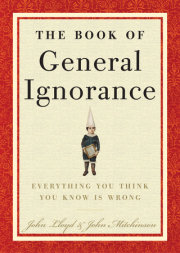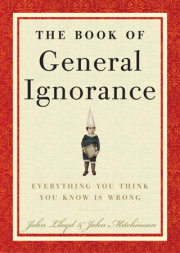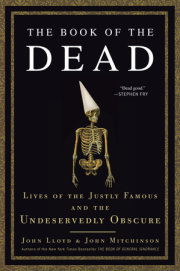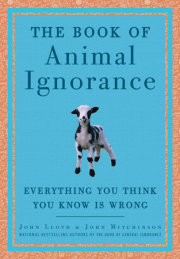What's the name of the tallest mountain in the world?
Mauna Kea, the highest point on the island of Hawaii.
The inactive volcano is a modest 13,799 feet above sea level, but when measured from the seabed to its summit, it is 33,465 feet high--about three-quarters of a mile taller than Mount Everest.
As far as mountains are concerned, the current convention is that "highest" means measured from sea level to summit; "tallest" means measured from the bottom of the mountain to the top.
So, while Mount Everest, at 29,029 feet is the highest mountain in the world, it is not the tallest.
Measuring mountains is trickier than it looks. It's easy enough to see where the top is, but where exactly is the bottom of a mountain?
For example, some argue that Mount Kilimanjaro in Tanzania--at 19,340 feet--is taller than Everest because it rises straight out of the African plain, whereas Everest is merely one of many peaks topping the enormous base of the Himalayas, shared by the world's next thirteen highest mountains.
Others claim that the most logical measure ought to be the distance of a mountain's peak from the center of the Earth.
Because the Earth is a flattened rather than a perfect sphere, the equator is about thirteen miles further from the center of the Earth than the poles.
This is good news for the reputation of those mountains that are very close to the equator--like Mount Chimborazo in the Andes--but it also means accepting that even the beaches in Ecuador are higher than the Himalayas.
Though massive, the Himalayas are surprisingly young. When they were formed, the dinosaurs had been dead for twenty-five million years.
In Nepal, Everest is known as Chomolungma (Mother of the Universe). In Tibet, it is called Sagamartha (Forehead of the Sky). Like any healthy youngster, it is still growing, at the not very exciting rate of less than a quarter of an inch a year.
How do moths feel about flames?
They're not attracted to them. They are disoriented by them.
Apart from the odd forest fire, artificial light sources have been in existence for an extremely short time in comparison with the age of the relationship between moths and the sun and moon. Many insects use these light sources to navigate by day and night.
Because the moon and sun are a long way away, insects have evolved to expect the light from them to strike their eyes in the same place at different times of day or night, enabling them to calculate how to fly in a straight line.
When people come along with their portable miniature suns and moons and a moth flies past, the light confuses it. It assumes it must somehow be moving in a curved path, because its position in relation to the stationary sun or moon, has unexpectedly changed.
The moth then adjusts its course until it sees the light as stationary again. With a light source so close, the only way this is possible is to fly around and around it in circles.
Moths do not eat clothes. (It's their caterpillars that do it.)
Where is the driest place on earth?
Antarctica. Parts of the continent have seen no rain for two million years.
A desert is technically defined as a place that receives less than ten inches of rain a year.
The Sahara gets just one inch of rain a year.
Antarctica's average annual rainfall is about the same, but 2 percent of it, known as the Dry Valleys, is free of ice and snow and it never rains there at all.
The next-driest place in the world is the Atacama Desert in Chile. In some areas, no rain has fallen for four hundred years and its average annual rainfall is a tiny 0.004 inch. Taken as a whole, this makes it the world's driest desert, 250 times as dry as the Sahara.
As well as the driest place on earth, Antarctica can also claim to be the wettest and the windiest. Seventy percent of the world's fresh water is found there in the form of ice, and its wind speeds are the fastest ever recorded.
The unique conditions in the Dry Valleys of Antarctica are caused by so-called katabatic winds (from the Greek word for "going down"). These occur when cold, dense air is pulled downhill simply by the force of gravity. The winds can reach speeds of 200 mph, evaporating all moisture--water, ice, and snow--in the process.
Though Antarctica is a desert, these completely dry parts of it are called, somewhat ironically, oases. They are so similar to conditions on Mars that NASA used them to test the Viking mission.
Where are you most likely to get caught in
a hailstorm?
The Western Highlands of Kenya, in Africa.
In terms of annual average, Kericho, Kenya, has more hail than anywhere else on earth, with hail falling on 132 days each year. By comparison, the United Kingdom averages only 15 hail days in a year and the worst affected area in the United States, the eastern Rockies, experiences an average of 45 hail days a year.
What causes the abundance of hail is not fully understood. Kericho is the home of Kenya's tea plantations, and a 1978 study showed that organic litter from the tea plants gets stirred into the atmosphere, where it acts as a nucleus around which hailstones can grow.
Another theory is that the high altitude of the region could be to blame, as the shape of the terrain causes a large uplift of warm air that quickly condenses. This, and the reduced distance between the freezing level (about three miles up) and the ground, reduces the chance of hailstones' melting.
The average hailstone is about a quarter of an inch across, but they can grow large enough to dent cars, shatter greenhouses, and even injure people.
The largest single hailstone ever recorded in the United States was 7 inches in diameter, 18.75 inches in circumference, and weighed in at just under a pound. It fell into the backyard of a house in Aurora, Nebraska, in June 2003. This is off the end of the official U.S. scale for describing hailstones, which starts at "pea" and rises progressively through mothball, walnut, and teacup to softball. The Aurora hailstone was the size of a small melon and would have hit the ground at 100 mph.
Hail costs the United States $1 billion each year in damage to property and crops. A hailstorm that struck Munich, Germany, in July 1984 caused an estimated $1 billion worth of damage to trees, buildings, and motor vehicles in a single afternoon. Trees were stripped of their bark, and whole fields of crops were destroyed. More than 70,000 buildings and 250,000 cars were damaged, and more than 400 people were injured.
However, the world's worst hailstorm occurred in the Gopalanj district of Bangladesh on April 14, 1986. Some of the hailstones weighed more than two pounds, and at least 92 people were killed.
What's the largest living thing?
It's a mushroom.
And it's not even a particularly rare one. You've probably got the honey fungus (Armillaria ostoyae) in your garden, growing on a dead tree stump.
For your sake, let's hope it doesn't reach the size of the largest recorded specimen, in Malheur National Forest in Oregon. It covers 2,200 acres and is between two thousand and eight thousand years old. Most of it is underground in the form of a massive mat of tentacle-like white mycelia (the mushroom's equivalent of roots). These spread along tree roots, killing the trees and peeping up through the soil occasionally as innocent-looking clumps of honey mushrooms.
The giant honey fungus of Oregon was initially thought to grow in separate clusters throughout the forest, but researchers have now confirmed it is the world's single biggest organism, connected under the soil.
What's the biggest thing a blue whale can swallow?
a. A very large mushroom
b. A small family car
c. A grapefruit
d. A sailor
A grapefruit.
Quite interestingly, a blue whale's throat is almost exactly the same diameter as its belly button (which is about the size of a salad plate), but a little smaller than its eardrum (which is more the size of a dinner plate).
For eight months of the year, blue whales eat virtually nothing, but during the summer they feed almost continuously, scooping up three tons of food a day. As you may remember from biology lessons, their diet consists of tiny, pink, shrimplike crustaceans called krill, which go down like honey. Krill come conveniently served in huge swarms that can weigh more than 100,000 tons.
The word krill is Norwegian. It comes from the Dutch word kriel, meaning "small fry" but now also used to mean both pygmies and "small potatoes." Krill sticks have been marketed with reasonable success in Chile but krill mince was a bit of a disaster in Russia, Poland, and South Africa owing to dangerously high levels of fluoride. It came from the krill's shells, which were too small to pick off individually before mincing.
The narrow gauge of a blue whale's throat means it couldn't have swallowed Jonah. The only whale with a throat wide enough to swallow a person whole is the sperm whale and, once inside, the intense acidity of the sperm whale's stomach juices would make survival impossible. The celebrated case of the "Modern Jonah" in 1891, in which James Bartley claimed to have been swallowed by a sperm whale and rescued by his crewmates fifteen hours later, has been nailed as a fraud.
Aside from its throat, everything else about the blue whale is big. At 105 feet in length, it is the largest creature that has ever lived--three times the size of the biggest dinosaur and equivalent in weight to 2,700 people. Its tongue weighs more than an elephant; its heart is the size of a family car; its stomach can hold more than a ton of food. It also makes the loudest noise of any individual animal: a low frequency hum that can be detected by other whales more than 10,000 miles away.
Which bird lays the smallest egg for its size?
The ostrich.
Although it is the largest single cell in nature, an ostrich egg is less than 1.5 percent of the weight of the mother. A wren's egg, by comparison, is 13 percent of its weight.
The largest egg in comparison with the size of the bird is that of the little spotted kiwi. Its egg accounts for 26 percent of its own weight: the equivalent of a woman giving birth to a six-year-old child.
An ostrich egg weighs as much as twenty-four hen's eggs; to soft-boil one takes forty-five minutes. Queen Victoria tucked into one for breakfast and declared it among the best meals she had ever eaten.
The largest egg laid by any animal--including the dinosaurs--belonged to the elephant bird of Madagascar, which became extinct in 1700. It was ten times the size of an ostrich egg, nine liters in volume and the equivalent of 180 chicken's eggs.
The elephant bird (Aepyornis maximus) is thought to be the basis for the legend of the fierce roc that Sinbad battles in the Arabian Nights.
How long can a chicken live without its head?
About two years.
On September 10, 1945, a plump young cockerel in Fruita, Colorado, had his head chopped off and lived. Incredibly, the axe had missed the jugular vein and left enough of the brain stem attached to the neck for him to survive, even thrive.
Mike, as he was known, became a national celebrity, touring the country and featuring in Time and Life magazines. His owner, Lloyd Olsen, charged twenty-five cents for a chance to meet "Mike the Headless Wonder Chicken" in sideshows across the United States. Mike would appear complete with a dried chicken's head purported to be his own--in fact, the Olsens' cat had made off with the original. At the height of his fame, Mike was making $4,500 a month, and was valued at $10,000. His success resulted in a wave of copycat chicken beheadings, though none of the unfortunate victims lived for more than a day or two.
Mike was fed and watered using an eyedropper. In the two years after he lost his head, he put on nearly six pounds and spent his time happily preening and "pecking" for food with his neck. One person who knew Mike well commented: "He was a big fat chicken who didn't know he didn't have a head."
Tragedy struck one night in a motel room in Phoenix, Arizona. Mike started to choke and Lloyd Olsen, to his horror, realized he'd left the eyedropper at the previous day's show. Unable to clear his airways, Mike choked to death.
Mike remains a cult figure in Colorado, and, every May since 1999, Fruita has marked his passing with a "Mike the Headless Chicken" Day.
What has a three-second memory?
Not a goldfish, for starters.
Despite its status as a proverbial fact, a goldfish's memory isn't a few seconds long.
Research by the School of Psychology at the University of Plymouth in 2003 demonstrated beyond a reasonable doubt that goldfish have a memory span of at least three months and can distinguish between different shapes, colors, and sounds. They were trained to push a lever to earn a food reward; when the lever was fixed to work only for an hour a day, the fish soon learned to activate it at the correct time. A number of similar studies have shown that farmed fish can easily be trained to feed at particular times and places in response to an audible signal.
Goldfish don't swim into the side of the bowl, not because they can see it, but because they are using a pressure-sensing system called the lateral line. Certain species of blind cave fish are able to navigate perfectly well in their lightless environment by using their lateral line system alone.
While we're dealing with goldfish myths, a pregnant goldfish isn't, hasn't, and can't be called a "twit." Goldfish don't get pregnant: they lay eggs that the males fertilize in the water.
In principle, there could be a word for a female fish with egg development, but none is listed in any proper dictionary.
What's the most dangerous animal that
has ever lived?
Half the human beings who have ever died, perhaps as many as 45 billion people, have been killed by female mosquitoes (the males only bite plants).
Mosquitoes carry more than a hundred potentially fatal diseases, including malaria, yellow fever, dengue fever, encephalitis, filariasis, and elephantiasis. Even today, they kill one person every twelve seconds.
Amazingly, nobody had any idea that mosquitoes were dangerous until the end of the nineteenth century. In 1877 the British doctor Sir Patrick Manson--known as "Mosquito" Manson--proved that elephantiasis was caused by mosquito bites.
Seventeen years later, in 1894, it occurred to him that malaria might also be caused by mosquitoes.
Copyright © 2007 by John Mitchinson. All rights reserved. No part of this excerpt may be reproduced or reprinted without permission in writing from the publisher.










